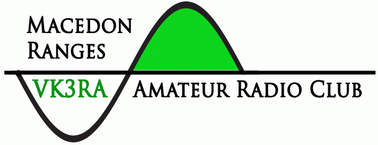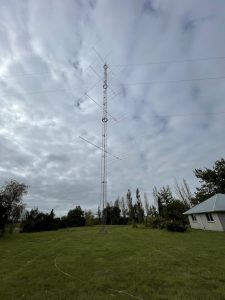When I moved to Drummond in December 2021 the first task was to hang an off centre fed dipole for 80m and above from a convenient dead tree near the shack. While receiving WSPR on 20m it didn’t take long to notice one station, VK3MO, running 5W, was overwhelmingly strong here and was being heard around the world. A single 2 minute transmission by Ian is often spotted by over 150 stations. Outstanding!
Ian was kind enough to invite me over for a tour of his station.
Understanding the various factors that influence the transfer of power between two points on the surface of the earth, via the ionosphere is a gripping topic. There is no substitute for real world measurements over a long period of time. This is necessary because the sun’s solar cycle is changing the state of the ionosphere over time requiring ongoing measurements to determine the overall factors that result in the maximum transfer of power between two stations. . To do this antenna hardware is required that is capable of varying the angle of radiation between approximately 2 degrees and 20 degrees.
The antenna systems available at VK3MO are capable of this.
The 4 x 5 element stack of yagis at the VK3MO primary location is capable of changing the radiation angle from 5 degrees to 20 degrees by selecting antennas at different heights. To produce radiation at a take off angle of 2 degrees a secondary location is used with a 6 over 6 yagi array on sloping ground to the East. This antenna is mostly fixed on long path to Europe fed with a wspr beacon running 24/7 using Ian’s wife’s call sign VK3QN. WSPR beacons are used at both locations to enable collecting a large amount of useful data without being time intensive.
Ian has modelled all his antennas using EZNEC and has used HFTA (High Frequency Terrain Analysis) to evaluate the take of angle of the various antennas over real ground. Ian also stressed the importance of having equipment that is capable of making accurate and repeatable measurements.
Ian also has a stacked rhombic antenna with 8 wavelengths on a leg giving a total of 1340m of radiating wire. The upper rhombic is at 40M and the lower rhombic is at 21M. The rhombic had a gain of 23dBi at a take off angle of 5 degrees on 20M and is directed at New York. The rhombic was modelled using EZNEC and it has 3dB more gain than the 5/5/5/5 yagis Both the yagis and the rhombic have a take off angle of 5 degrees which allows a comparison between the two antennas in the direction of New York. Ian sees see the 3 dB advantage which validates the accuracy of the NEC antenna modelling software.

Lessons
Having control of the take off angle is useful to achieve the best outcome. Bigger and higher does not always give the best result. Ian finds that selecting a lower beam at times can give better signals.
With a high gain antenna system, extra power doesn’t make much difference. Bill Meara, on the Soldersmoke blog, noted that during a contact with Ian, he turned off his 0.12kW amplifier and Ian still received him 58-59 running 3-4W.
My thanks to Ian for his hospitality which included my favourite snack of a cheese toasty skilfully prepared.
Story by Peter Marks


